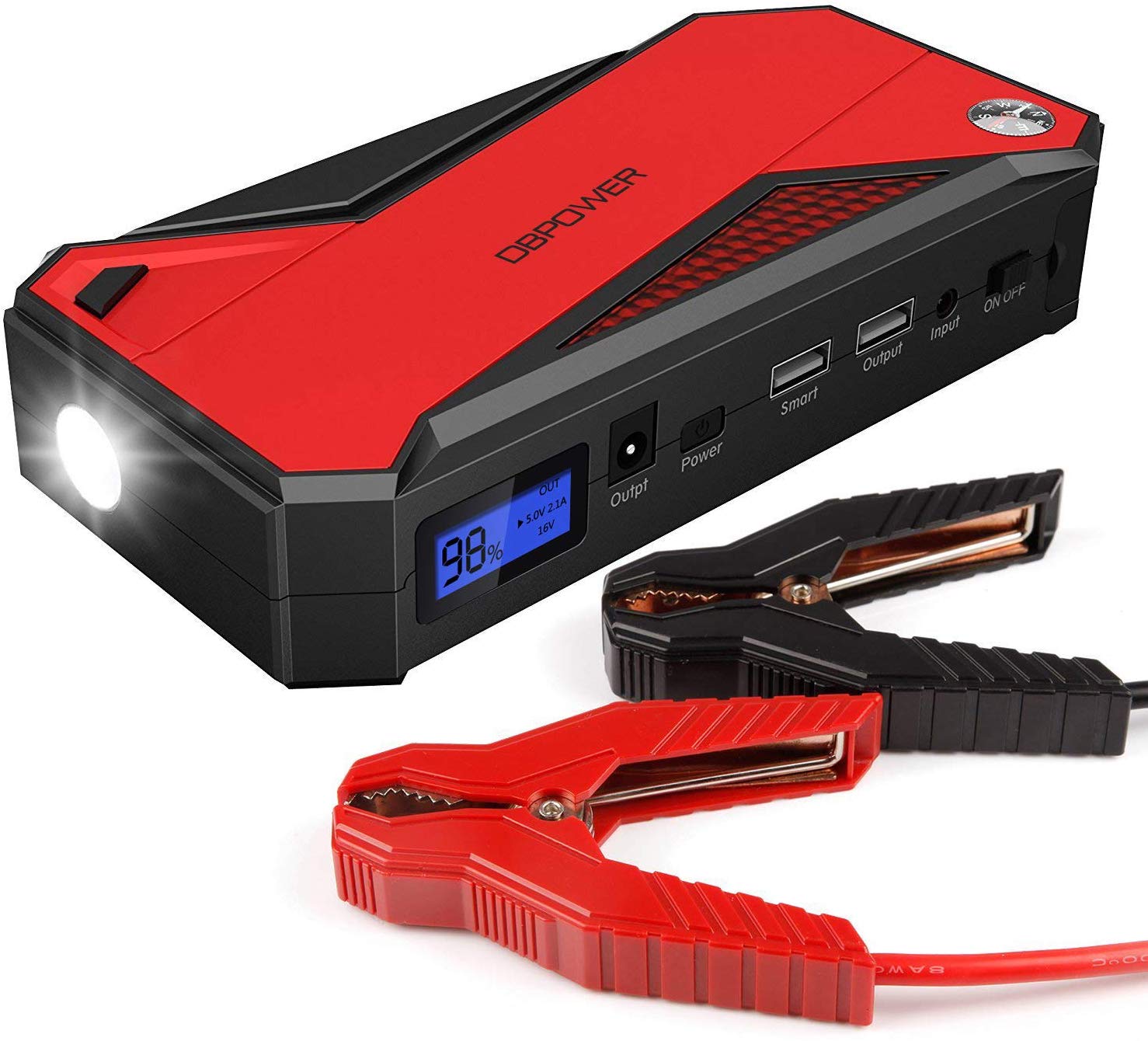The Ultimate Guide to Jump Starter Power Packs

Dead battery? It’s a universal experience, that sinking feeling when your car refuses to turn over. But what if you could reclaim that lost power instantly, without the need for another vehicle? Enter the jump starter power pack, a portable powerhouse capable of reviving your dead battery in minutes. This guide delves into the world of jump starters, helping you navigate the options and find the perfect power pack for your needs.
Choosing the right jump starter can feel overwhelming. Amperage, peak current, battery capacity – the jargon alone can be daunting. This comprehensive resource simplifies the process, breaking down the essential features and explaining what to look for in a top-tier jump starter. We’ll explore the nuances of different models, from compact lithium-ion packs ideal for everyday cars to heavy-duty units designed for trucks and SUVs. No more guesswork, just informed decisions.
The evolution of the jump starter has been remarkable. From bulky, cumbersome lead-acid units to sleek, lightweight lithium-ion powerhouses, the technology has advanced significantly. Early jump starters often required separate charging and offered limited power. Today's best jump starter packs are not only powerful enough to jump-start multiple vehicles on a single charge but also double as portable power banks for charging your devices. This transformative shift has made them an indispensable tool for any driver.
A reliable jump starter is more than just a convenience; it's a safety net. Picture yourself stranded on a dark road or in a remote area with a dead battery. A quality jump starter provides peace of mind, ensuring you're never truly alone. Beyond emergencies, these portable power sources offer practical benefits, powering everything from camping gear to power tools. They empower you to take control, offering independence and self-sufficiency on the road and beyond.
One of the main issues surrounding jump starters is choosing the right one for your vehicle. Selecting a power pack with insufficient amperage could prove ineffective, while an overly powerful unit might damage your car's electrical system. This guide addresses these concerns, providing clear guidance on selecting a jump starter that perfectly matches your vehicle's needs and safeguards its sensitive electronics. We'll equip you with the knowledge to make an informed purchase, avoiding common pitfalls and ensuring your safety.
Lithium-ion jump starters are currently the dominant type, known for their compact size, lightweight design, and high energy density. They are also safer than older lead-acid models, less prone to leaking, and require less maintenance.
Benefits of a Top-Tier Jump Starter:
1. Emergency Readiness: Never be stranded by a dead battery again. A reliable jump starter ensures you can quickly and safely revive your vehicle, no matter the location.
2. Portable Power: Many jump starters double as portable power banks, allowing you to charge phones, tablets, and other devices on the go. This added functionality makes them invaluable for travel, camping, and outdoor activities.
3. Peace of Mind: Knowing you have a reliable power source at hand reduces stress and provides a sense of security, especially during long trips or in unpredictable weather conditions.
Advantages and Disadvantages of Jump Starter Power Packs
| Advantages | Disadvantages |
|---|---|
| Portable and compact | Can be expensive |
| Easy to use | Requires periodic charging |
| Multiple charging options | Capacity can degrade over time |
Best Practices:
1. Regularly charge your jump starter: Maintain a full charge to ensure it's ready when needed. 2. Store it properly: Avoid extreme temperatures, which can impact battery performance.
3. Read the manual: Familiarize yourself with the specific instructions for your jump starter model.
4. Inspect the clamps: Ensure they are clean and free of corrosion for optimal connection.
5. Safety first: Always follow safety precautions when jump-starting a vehicle.
FAQs
1. How often should I charge my jump starter? - Generally, every 3-6 months.
2. Can I use a jump starter on a diesel engine? - Yes, but ensure the jump starter has sufficient amperage.
3. How long does it take to charge a jump starter? - Varies depending on the model and charging method, typically a few hours.
4. What is peak amperage? - The maximum current the jump starter can deliver for a short burst.
5. What is cranking amps? - The amount of current the jump starter can deliver for 30 seconds at 0°F.
6. What safety features should I look for? - Over-charge protection, reverse polarity protection, and short-circuit protection.
7. Can I use a jump starter on a motorcycle? - Yes, smaller jump starters are ideal for motorcycles.
8. What is the lifespan of a jump starter? - Depends on usage and care, typically several years.
Tips and Tricks:
Keep your jump starter in your vehicle's trunk for easy access. Consider a jump starter with built-in LED lights for added convenience in emergencies.
In today's connected world, having a reliable power source is more crucial than ever. The best jump starter power pack offers not only emergency roadside assistance but also portable power for various devices. It provides peace of mind, knowing you're prepared for unexpected situations. From jump-starting your vehicle to powering your camping gear, a versatile jump starter is a valuable investment that ensures you're never truly disconnected. Choosing the right jump starter can empower you with independence and self-sufficiency on the road and beyond. Invest in a top-quality jump starter and experience the freedom and security it provides. Don't wait for a dead battery to leave you stranded. Equip yourself with the power to take control.
Paris weather in july your complete guide
Brewing connections starbucks gift cards and facebook events
Unlocking the perfect warm gray valspar paint colors













